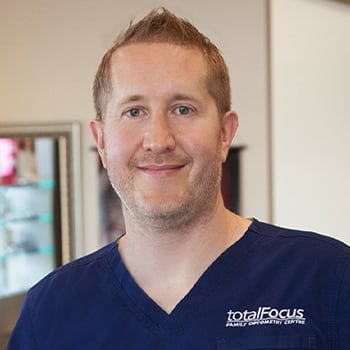The term astigmatism is so common in the ophthalmic world that many people are now fully aware of what it means. The word comes from the Greek ‘a’, which means without and ‘stigma’, which means a point. A common example that is often used to describe the eye condition is the difference between a football and basketball. It is important to know that a normal eye’s cornea has a curve like that of a basketball and has the same roundness in all the areas. When light bends differently depending on where it strikes the cornea and passes through the eyeball, it leads to astigmatism.
What is Astigmatism?
Astigmatism is a common vision condition that causes blurred vision. It occurs when the cornea or lens of the eye is not perfectly round, but instead has an irregular curvature. This can cause light rays to focus at different points inside the eye, instead of all coming together on the retina, which is the light-sensitive tissue at the back of the eye.
Technically speaking, astigmatism implies there are two different foci in the eyes instead of a single point of focus. This means that light fails to merge on a singular point and as a result, it merges on two different points.
Symptoms of Astigmatism
Common symptoms of astigmatism usually include:
- Blurry or distorted vision
- Eye strain and discomfort
- Headaches
- Difficulty with night vision
- Squinting
However, you must know that astigmatism is not a disease. There are millions of people around the world who suffer from some degree of astigmatism. In the ophthalmic world, it is also referred to as a cylinder. The angle and degree at which astigmatism occurs can vary from one individual to the next. This is the reason why two eyeglass prescriptions are rarely the same as the eye can take an infinite number of shapes.
If you think you might have astigmatism, it’s important to consult with your trusted eye doctor. They will be able to diagnose any vision issues you are experiencing.
Are There Different Types of Astigmatism?
Astigmatism is usually categorized into one of three categories to determine your diagnosis:
- Myopic Astigmatism: When you can see clearly close-up, but far away objects appear blurry.
- Hyperopic Astigmatism: When you can see far distances clearly, but close-up objects are blurry.
- Mixed Astigmatism: When the cornea produces a mix between myopic astigmatism and hyperopic astigmatism.
The 3 most common types of astigmatism include:
- Regular Astigmatism: When the curvature of the cornea is not completely round.
- Irregular Astigmatism: When the curvature of the eye is not completely round.
- Lenticular Astigmatism: When the intraocular lens has curvature issues.
The most common type of astigmatism is regular astigmatism. In this type of condition, the two different curvatures of the eye are 90 degrees apart from each other. A few eye conditions or surgeries often induce irregular astigmatism where the curvatures can be in many different places on the surface of the eye. Since the curvatures can differ from one person to another, it can lead to severe cases of astigmatism.
How is Astigmatism Treated?
Regular astigmatism can be successfully treated with contact lenses, refractive surgery (such as LASIK), or prescription glasses. Individuals who have astigmatism are usually prescribed rigid gas-permeable lenses as these lenses are hard and can hold their shape. They also allow oxygen to pass to the eye. Sometimes, soft contact lenses are also used for more minor astigmatism. A few people with astigmatism are treated with laser eye surgery, such as LASIK.
Irregular astigmatism cannot be treated with normal and conventional correctional methods. Sometimes, special treatments are required to completely cure the condition. Astigmatism can be corrected in almost all cases. Although it can lead to several symptoms, such as blurred vision, it does not lead to permanent damage. Regular comprehensive eye exams play an important role in identifying the symptoms of astigmatism.
Astigmatism in Children
Thousands of children are born with astigmatism and do not realize they have a problem until they get their eyes checked. It may affect the concentration or reading ability of a child. Therefore, it is important to treat the condition as soon as it is diagnosed. Scheduling regular eye exams for your child can help catch the condition early on.
Ask Your Eye Doctor If You Have Astigmatism
While astigmatism isn’t a life-threatening condition, it can affect your vision on a daily basis.
If you are showing the common signs of astigmatism, book an appointment with your optometrist at Total Focus Optometry in Edmonton. We can examine your vision for any irregularities and give you a proper diagnosis.




